
When 1883 writer Taylor Sheridan put a group of German immigrants on a wagon train heading toward Oregon, he drew from the historical record of immigration to America. During the 1880s around 1.5 million Germans came to the United States and the largest number of them arrived in 1882 when about a quarter of a million left their homeland for a new opportunity.
Oregon saw the arrival of the first Volga Germans in 1881, people who had first settled on the Great Plains in central Kansas. Those German migrants left Kansas and found their way to California where they boarded a steamship to travel from San Francisco to Portland. The following year most of them left the Portland area and traveled to Eastern Washington in search of an area where farmland was more plentiful. Some remained in Oregon, founding the village of Blooming.
Germans traveled overland from Nebraska to the Pendleton, Oregon, area in 1882, and while some remained in the Pendleton area, several families kept traveling west to Portland and a new town they established in Albina. A decade later more Germans migrated from the Midwest and Great Plains settling the town of Canby, Oregon.
Immigration by Eastern Europeans to America was not a new phenomenon. Indeed, Germans had been coming to America since the 1600s, with larger numbers arriving in the 1700s as they settled in Pennsylvania and other eastern areas. While living in Pennsylvania, German craftsmen built the first Conestoga wagons. Although these large wagons were never popular with overland travelers due to their massive size, they did see widespread use hauling freight, particularly along the Santa Fe Trail after its establishment in 1821.
Denne historien er fra April 2022-utgaven av True West.
Start din 7-dagers gratis prøveperiode på Magzter GOLD for å få tilgang til tusenvis av utvalgte premiumhistorier og 9000+ magasiner og aviser.
Allerede abonnent ? Logg på
Denne historien er fra April 2022-utgaven av True West.
Start din 7-dagers gratis prøveperiode på Magzter GOLD for å få tilgang til tusenvis av utvalgte premiumhistorier og 9000+ magasiner og aviser.
Allerede abonnent? Logg på
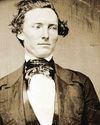
FIREARMS COLT WALKER 47
THE LEGENDARY HANDGUN THAT REALLY WON THE WEST
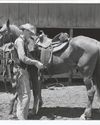
HERITAGE TRAVE
THE AMERICAN WEST IN ALL ITS GLORY OUR ANNUAL FAVORITES LIST CELEBRATES DESTINATIONS ACROSS THE WESTERN UNITED STATES.

Wild Turkey, and Not the Drinkin' Kind
The actual bird was a favorite of pioneers.

THE PASSION PROJECTS OF THE MODERN WESTERN
A YEAR OF UNDERRATED EXCELLENCE
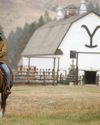
WESTERN BOOKS THEN AND NOW
THE STATE OF WESTERN HISTORY AND FICTION PUBLISHING IN 2024 IS ONE OF GRIT AND DETERMINATION.

SAMUEL WALKER VALIANT WARRIOR
While a prisoner at the castle of Perote, Walker was put to work raising a flagpole. At the bottom of the hole, Walker placed a Yankee dime, vowing to someday come back and retrieve it, at the same time exacting revenge on his Mexican captors. In the summer of 1847, when Walker's mounted riflemen returned and routed Santa Anna's guerillas, the young captain kept his promise and got his dime back.
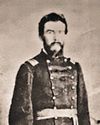
THE BATTLE OF CENTRALIA
ON September 27, 1864, Bloody Bill Anderson and about 80 men took over the small railroad village of Centralia, looting stores and discovering a barrel of whiskey that they hauled out into the street. Wild enough when sober, they soon were roaring drunk.
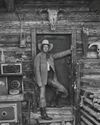
THE MAN WHO SHOOTS THE WEST
Jay Dusard is a living American photographer who has made Arizona his home for over 60 years, seeing it first in 1960 on a visit, moving here for good in 1963.
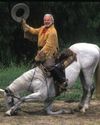
A TRUE WESTERNER INDEED PHIL SPANGENBERGER 1940-2024
Spangenberger had Nevada trained to bow by the legendary horse trainer, Glenn Randall, who trained Roy Rogers' Trigger, Gene Autry's Champion, Rex Allen's Koko and the Ben Hur chariot horses, among other great equines.

Where Did the Loot Go? - This is one of those find the money stories. And it's one that has attracted treasure hunters for more than 150 years.
Whatever happened to the $97,000 from the Reno Gang's last heist? Up to a dozen members of the Reno Gang stopped a Jeffersonville, Madison and Indianapolis train at a watering station in southern Indiana. The outlaws had prior intelligence about its main load: express car safes held about $97,000 in government bonds and notes. In the process of the job, one of the crew was killed and two others hurt. The gang made a clean getaway with the loot.